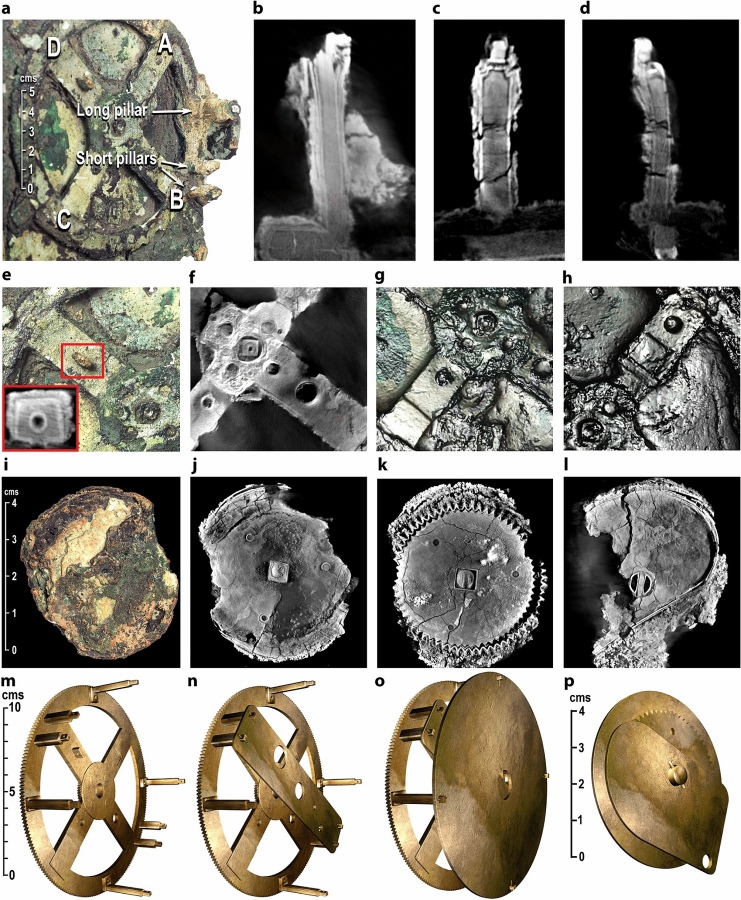[< Gallery Home | Latest Images | Top 100 | Submit Picture >]
277688 Pictures
|
<< Previous Picture | Next Picture >>

National Archaeological Museum Athens
[741 x 900 jpg]
| Submitted by | dodomad |
| Added | Feb 08 2022 |
| Hits | 374 |
| Votes | 1 |
Description
The Antikythera Mechanism, an ancient Greek astronomical calculator, has challenged researchers since its discovery in 1901. Now split into 82 fragments, only a third of the original survives, including 30 corroded bronze gearwheels. Microfocus X-ray Computed Tomography (X-ray CT) in 2005 decoded the structure of the rear of the machine but the front remained largely unresolved. X-ray CT also revealed inscriptions describing the motions of the Sun, Moon and all five planets known in antiquity and how they were displayed at the front as an ancient Greek Cosmos. Inscriptions specifying complex planetary periods forced new thinking on the mechanization of this Cosmos, but no previous reconstruction has come close to matching the data. Our discoveries lead to a new model, satisfying and explaining the evidence. Solving this complex 3D puzzle reveals a creation of genius—combining cycles from Babylonian astronomy, mathematics from Plato’s Academy and ancient Greek astronomical theories.
Evidence from Fragments A & D. Reconstructed plates and gear. (a) Photograph of Fragment A, showing pillars on the periphery of b1 and features on Spokes A, B, C, D. (b) X-ray CT of long pillar. (c–d) X-ray CT of short pillars. (b–d) are from an improved X-ray volume22. All pillars have shoulders and pierced ends. (e–h) Photographs, PTMs, X-ray CT: features on Spokes D, B, C, A, including holes, circular depressions and flattened areas. In (E), the pierced block on Spoke D is highlighted in red, with inset showing X-ray CT slice through the block. (i-l) Photograph & X-ray CT of Fragment D, showing a disk, gear and plate. (m–o), Computer reconstruction, showing b1, Strap on the short pillars; Circular Plate (CP) on the long pillars. (p) Computer reconstruction of the features in Fragment D, which we reconstruct as the epicyclic components of a Venus mechanism.
Source: Freeth, T., Higgon, D., Dacanalis, A. et al. A Model of the Cosmos in the ancient Greek Antikythera Mechanism. Sci Rep 11, 5821 (2021).
With many thanks to Druid3x3 for the information.
Evidence from Fragments A & D. Reconstructed plates and gear. (a) Photograph of Fragment A, showing pillars on the periphery of b1 and features on Spokes A, B, C, D. (b) X-ray CT of long pillar. (c–d) X-ray CT of short pillars. (b–d) are from an improved X-ray volume22. All pillars have shoulders and pierced ends. (e–h) Photographs, PTMs, X-ray CT: features on Spokes D, B, C, A, including holes, circular depressions and flattened areas. In (E), the pierced block on Spoke D is highlighted in red, with inset showing X-ray CT slice through the block. (i-l) Photograph & X-ray CT of Fragment D, showing a disk, gear and plate. (m–o), Computer reconstruction, showing b1, Strap on the short pillars; Circular Plate (CP) on the long pillars. (p) Computer reconstruction of the features in Fragment D, which we reconstruct as the epicyclic components of a Venus mechanism.
Source: Freeth, T., Higgon, D., Dacanalis, A. et al. A Model of the Cosmos in the ancient Greek Antikythera Mechanism. Sci Rep 11, 5821 (2021).
With many thanks to Druid3x3 for the information.
Posted Comments:
Andy B (2022-02-08)
The paper is Open Access in Nature:
http://doi.org/10.1038/s41598-021-84310-w
http://doi.org/10.1038/s41598-021-84310-w
To post comments first you must Register!
